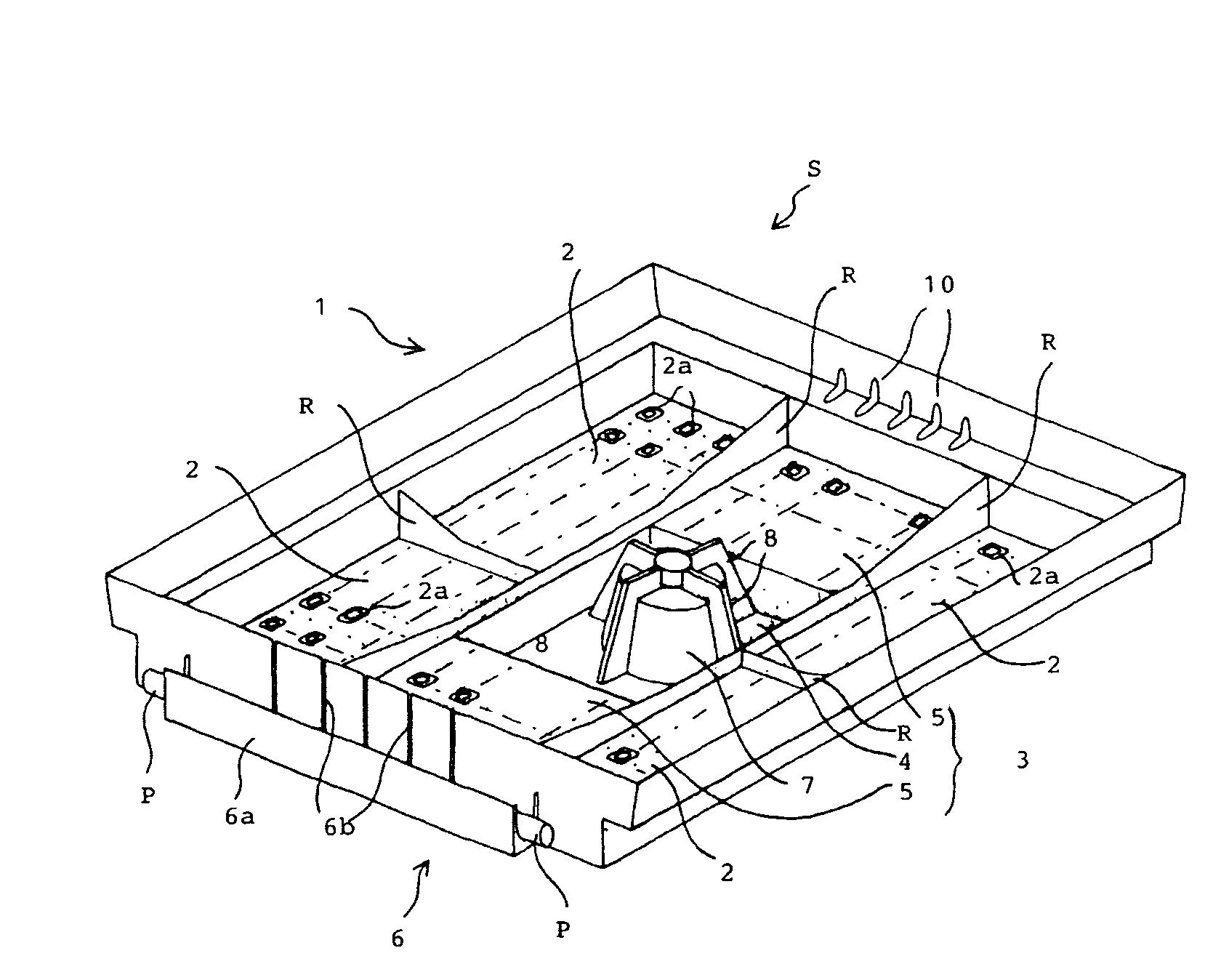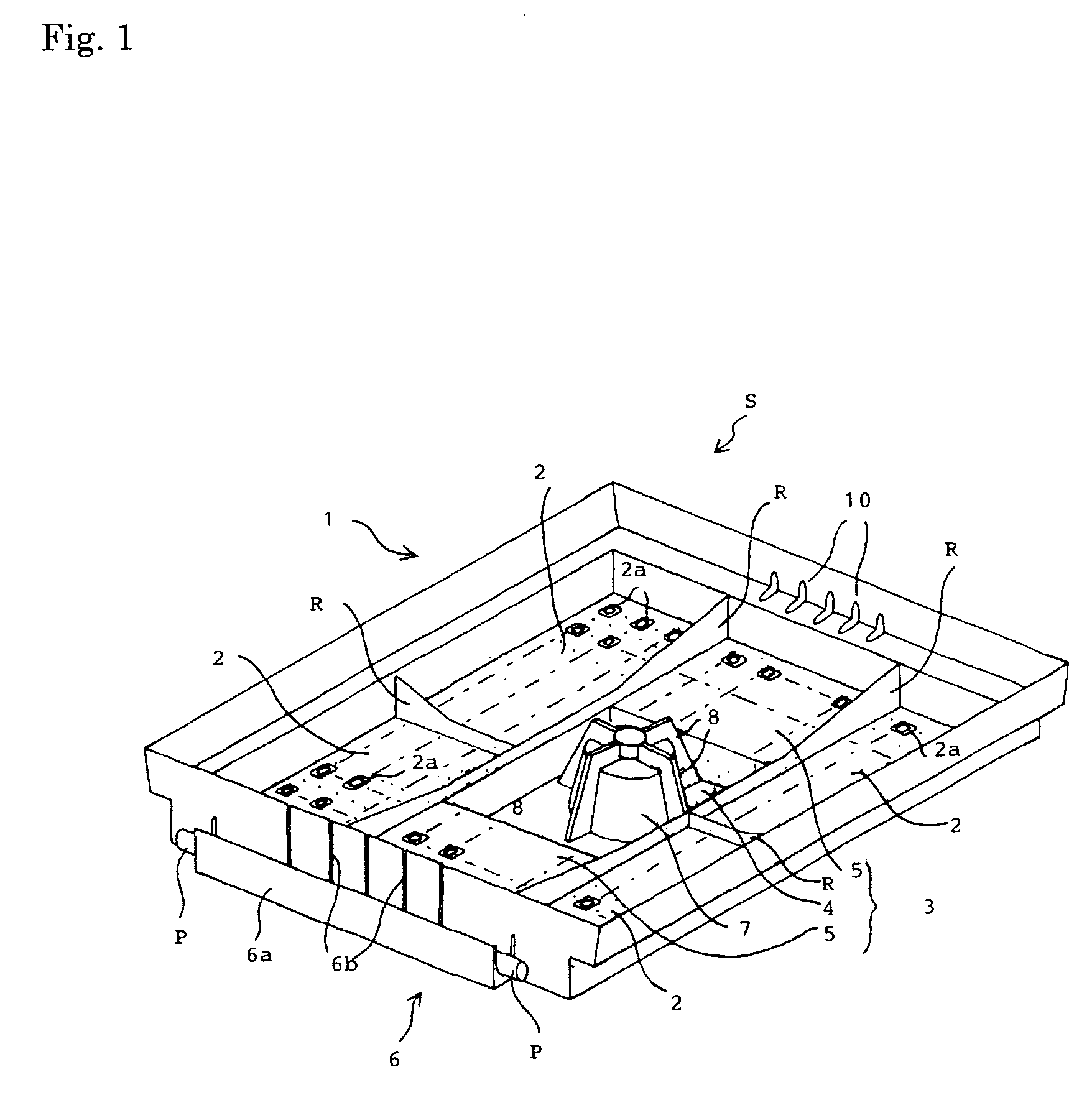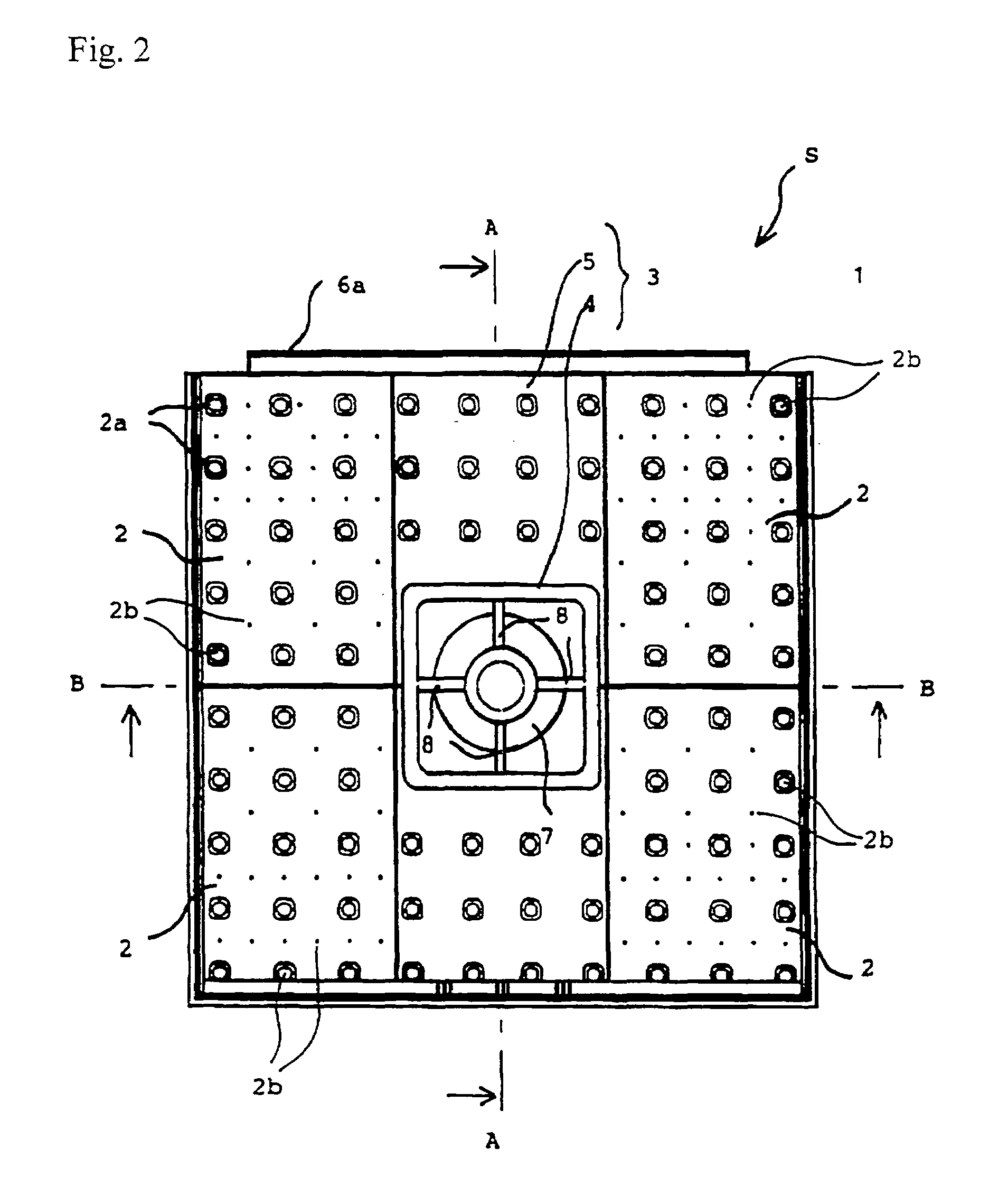Planting device and planting structure for plants
a planting device and plant technology, applied in watering devices, horticulture, roof improvement, etc., can solve the problems of increasing the cost of the device or the structure, the concrete layer is also considerably heavy, and the prior art device is still in use, so as to achieve the effect of light weight, simple structure and small number of components
- Summary
- Abstract
- Description
- Claims
- Application Information
AI Technical Summary
Benefits of technology
Problems solved by technology
Method used
Image
Examples
Embodiment Construction
[0045]According to the present invention, a planting device is provided with a body portion having a first fixing means and a second fixing means. The first fixing means is firmly fixed to a mounting surface of the body portion. The second fixing means is linked to the first fixing means. The body portion is provided at a bottom with a water draining means, a water retaining means and the first fixing means. The body portion is also provided at a side wall with a water receiving means. Soil is filled into a surrounding space enclosed with the side walls. A water supply pipe is erected at the water receiving means, thereby supplying water to the water retaining means formed at the bottom of the body portion. Soil is filled into the body portion to plant desired plants (or a desired plant) and to cultivate the plants thereon.
[0046]The body portion comprises a rectangular plastic cabinet, and a recessed part for reinforcement of the strength of the body portion is formed at a bottom of...
PUM
 Login to View More
Login to View More Abstract
Description
Claims
Application Information
 Login to View More
Login to View More - R&D
- Intellectual Property
- Life Sciences
- Materials
- Tech Scout
- Unparalleled Data Quality
- Higher Quality Content
- 60% Fewer Hallucinations
Browse by: Latest US Patents, China's latest patents, Technical Efficacy Thesaurus, Application Domain, Technology Topic, Popular Technical Reports.
© 2025 PatSnap. All rights reserved.Legal|Privacy policy|Modern Slavery Act Transparency Statement|Sitemap|About US| Contact US: help@patsnap.com



